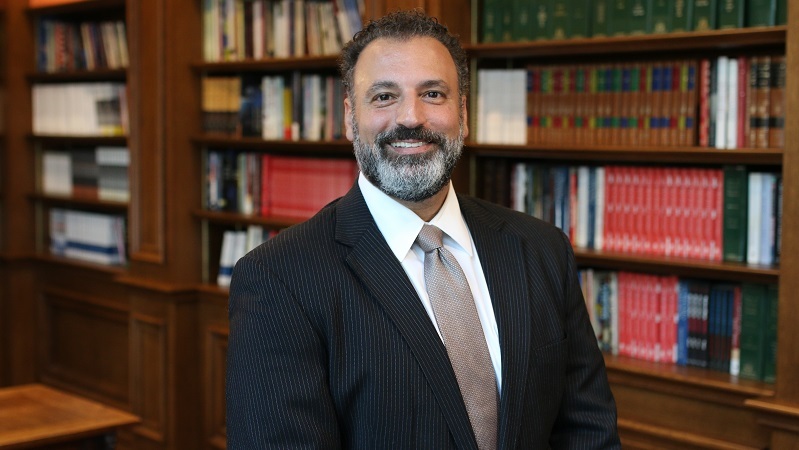The future of health care in America must be a market-based model, no matter how the U.S. Supreme Court rules on the Affordable Care Act, according to U.S. Rep. Cathy McMorris Rodgers.
Rodgers (R-WA) said that is the best path forward for all involved. She discussed health care issues Thursday with Texas Public Policy Foundation General Counsel Robert Henneke and David Balat, director of TPPF’s Right on Healthcare.
The one-hour presentation was shared on the TPPF website, YouTube and other platforms, and included a discussion and questions from the audience.

Rep. Cathy McMorris Rodgers
| Wikipedia
“The Biden administration, the majorities in the House and in the Senate are really taking health care towards a socialist approach, a government-run health care system,” Rodgers said. “And we have a lot of work to do to make sure that America leads in health care and health care reform with a uniquely American solution. That is the solution that is going to ensure that we continue to lead in having better care and that we continue to lead and have a modernized health care system.”
The Texas Public Policy Foundation served as lead counsel for individual plaintiffs in the constitutional challenge to the Affordable Care Act argued last November before the U.S. Supreme Court.
Henneke said its central argument claimed that the individual mandate, the requirement for citizens to buy health insurance under the Affordable Care Act, was unconstitutional.
“And that was a fatal flaw to the entirety of the Affordable Care Act. And the trial court agreed that all of the Affordable Care Act would have to be invalidated as a result,” he said. “Now, we know that the ramifications of that decision were stayed while the case was taken up through appeal. We litigated the case to the 5th Circuit Court of Appeals and argued it last November before the United States Supreme Court.
“But the context of why we're having this discussion here is because we are weeks away, if not days away, from the United States Supreme Court announcing its opinion in the California vs. Texas lawsuit that we were part of challenging Obamacare, challenging the Affordable Care Act. So, this is a great reason to check back in and to look at what the state of affairs are in terms of health care,” Henneke said.
He said he didn’t want to hold a discussion based on legal points, but instead wanted to focus on how “Americans are able to access the health care that they want, that they need for their families, how they're able to afford it, how they can have empowerment to have control over their health care decisions. But we know that so much of that is being blocked by the Affordable Care Act.”
Henneke said there appears to be three possible outcomes:
The Supreme Court agrees with the trial court that all of the Affordable Care Act should be struck down because the cornerstone of the Affordable Care Act, the individual mandate, is unconstitutional.
Or, the high court could find that the individual mandate is unconstitutional, but only strike down that provision, leaving the rest of the Affordable Care Act in place.
“The third option that's possible is the Supreme Court would say that because Congress no longer has a penalty associated with the individual mandate, then there's no harm, no foul,” he said. “And without an injury, then the case should not be resolved at all. I think that one of those are the three most likely outcomes.”
Rodgers, elected in 2010, served as chair of the House Republican Caucus from 2012-18 and currently serves as the vice chair of the House Energy and Commerce Committee.
She has been “a champion of health care” during her decade in Congress, Henneke said, pushing for the passage of laws in 2015 and 2018 that expanded access to speech-generating devices with people with ALS.
“Well, we know that the Affordable Care Act promised to bring down the cost of health insurance on average by $2,000,” Rodgers said. “If anything, it's been the unaffordable health care act because not only has insurance gone up, but co-pays, deductibles. So, people actually are paying more now today than ever for their health care.”
She said price transparency would fundamentally restore the doctor-patient relationship, removing hidden costs while revealing the cost of treatments and procedures.
“And that's how you're going to bring back competition among health-care providers,” Rodgers said. “That's how you're going to make sure that individuals are equipped to make the best decisions for themselves. So, I believe that we need to really lead right now on price transparency for health care. That's foundational to a lot of the reforms that we want to bring forward to ensure that we are delivering quality care at the lowest cost possible.”
Balat said Rep. Rodgers was “spot on” in her assessment.
“Where we are today is we don't have a free market system,” he said. “People always say we've tried the free market. So, it's now time to go for a Medicare-for-all solution or a government-sponsored, government-run type of health-care system. And that's just wrong thinking, because No. 1, we don't have a free market.”
Balat said far too much of the health-care pie is being consumed by “needless middlemen” and that must stop.
“So, there's a lot to be done and there's a lot to give the power back to the American patient in this country,” he said.
Rodgers said it’s a question of access to relevant information.
“Well, price transparency is really fundamental to restoring the doctor-patient relationship,” she said. “It's fundamental to empowering patients to know, to be able to be equipped to make those best decisions as to quality and cost. And right now, others are making that decision. So, that's why it's fundamental to restoring the doctor-patient relationship. And as I mentioned, there's a lot of hidden costs right now.”
Rodgers said the Trump administration made price transparency a priority.
“I am hopeful that they've started a process where now Congress will continue to build upon the reforms that they put in place that will bring more price transparency, because price transparency is the way that both the providers and the innovators will then compete with one another to deliver quality care at a lower price,” she said. “And that's the American way. That's the way that we encourage innovation, but also make sure that the individual is equipped to make those best decisions for themselves rather than someone in Washington, D.C., or a federal bureaucrat deciding whether or not you get the care that you would want.”
Balat agreed. He said it’s wrong for people to be charged different amounts for the same prescription or procedure based on their insurance company.
Henneke said the Trump administration obtained data from specific hospitals that showed a prescription drug, depending on your insurance plan, cost 10 times or more for the same pill from the same hospital.
“And that just drives up costs when three people can go to a hospital and they're going to end up paying three different prices for the exact same drug or the exact same procedure because they don't have the information for themselves to be able to negotiate or be able to shop around,” he said.
The price disparities also apply to medical procedures, where a hip replacement may range in price from $20,000 to $40,000, based on the insurer.
Balat said the promises made when the ACA was made law have all been broken.
“You know, President Obama did talk about the fact that deductibles and co-insurance would go down if the ACA was passed. People wouldn't go to the emergency room for their non-urgent health care, that they'd be able to keep their doctor,” he said. “None of that happened, in fact. (P)eople shouldn't go bankrupt because of their medical bills. And every one of those instances, it has gotten worse. It's gotten worse. So, for those who want more government in terms of a government-run option, you're saying let's double down on what's already not working.”
Rodgers was asked how to empower health care researchers and workers.
“We do have some brilliant researchers and we are leading in our health care systems. And our providers are extraordinary and they do need to be unleashed,” she said. “You know, we've just been through a really difficult year with COVDI-19 and we're celebrating Operation Warp Speed, the fact that it was a public-private partnership that brought the vaccine forward in less than a year. Another example of American innovation and leadership, from my perspective, coming out of COVID-19, our goal should be to usher in a new era of innovation and entrepreneurship.”
Balat urged people to use an online tool on the Right On Healthcare website. It contains a list of laboratories, pharmacy, surgery centers and doctors that post their cash prices at a very affordable rate that people can pick and choose.
Balat also offered this advice: “I would say first and foremost is, get a primary care physician, get a direct primary care doctor, get somebody that you can have a relationship with that can help guide you through this incredibly complex system,” he said. “It's important for a number of reasons. One, so that you can focus on a preventative health relationship, but also so that they can guide you, and (it’s) somebody who knows who you are. So, lots of things that can be done, but those are just some of the few.”
Rodgers said she is encouraged by people who want to learn about health care, its problems and the best ways forward.
“Well, number one, I applaud anyone who is listening because first and foremost, you're becoming informed,” she said. “And that's the first step, is to become educated on these issues, become informed, and then to make your voice heard, join the campaign for price transparency. There's a growing number of people that are calling for price transparency within our health-care system.
“The Trump administration moved it forward in a substantial way. And we need to continue those efforts to call for price transparency,” Rodgers said. “We need to continue to make the case that freedom and free markets will deliver the most efficient and most effective outcomes. And yes, there's important safety nets. But again, those safety nets, whether it's Medicare or Medicaid, think about Medicaid in the 50 states, those are safety nets are best run at the state level, ensuring that individuals and families have the ability to make those best decisions for themselves. That's because we want to make sure that we solve these challenges within our health care system the American way.”

